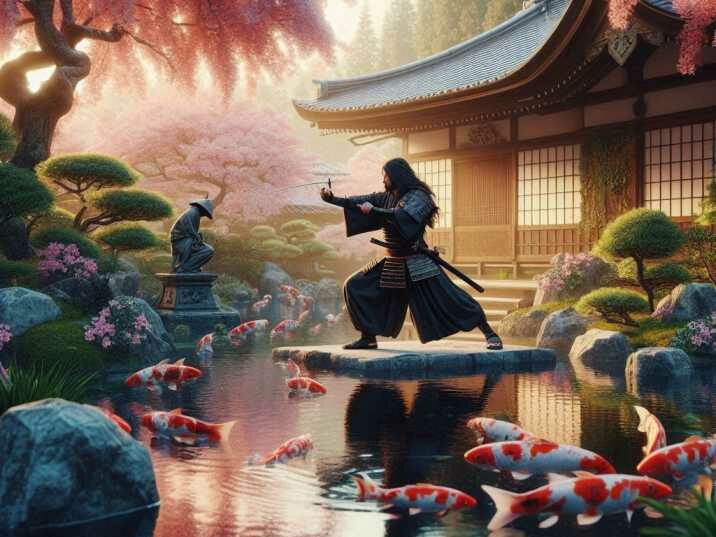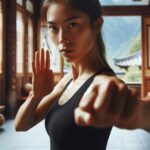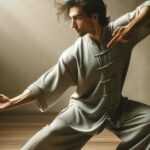Introduction
Table of Contents
The samurai, Japan’s legendary warriors, are known for their bravery, skill, and discipline. They practiced various martial arts to master combat and maintain their honor. In this article, we’ll explore the martial arts that samurai used, how these practices shaped their skills, and their impact on modern martial arts.

Table of Contents
- The Role of Martial Arts in Samurai Culture
- Kenjutsu: The Art of the Sword
- Iaijutsu: The Art of Drawing the Sword
- Jujutsu: The Art of Unarmed Combat
- Kyudo: The Way of the Bow
- Sojutsu: The Art of the Spear
- The Influence of Samurai Martial Arts on Modern Practices
- Conclusion
- FAQs
The Role of Martial Arts in Samurai Culture
Martial arts played a crucial role in the life of the samurai. They were not just warriors but also held a code of honor known as Bushido. This code emphasized courage, loyalty, and self-discipline, and their martial arts training was essential to uphold these values. The samurai trained extensively to prepare for battle and maintain their physical and mental strength.
Kenjutsu: The Art of the Sword
Kenjutsu is the traditional Japanese martial art of swordsmanship. Samurai practiced kenjutsu to become proficient in handling the katana, a curved sword that was their primary weapon. Kenjutsu involves various techniques such as strikes, thrusts, and defensive moves. Practicing kenjutsu helped samurai develop precision, speed, and control.
Key Aspects of Kenjutsu:
Techniques: Kenjutsu techniques involve fundamental cuts, thrusts, and intricate maneuvers, enabling samurai to handle their swords with skill and precision.
Forms: These are pre-arranged patterns, or kata, which practice specific movements and techniques in a structured sequence to develop mastery and fluidity.
Training: Kenjutsu training includes solo practice to perfect techniques and sparring to apply them in dynamic, combat-like scenarios.
Iaijutsu: The Art of Drawing the Sword
Iaijutsu is another critical martial art practiced by the samurai. It focuses on the technique of drawing and cutting with the sword in one smooth motion. This art was vital for quick reactions in close combat situations. Iaijutsu requires precision and speed to draw the sword, execute a cut, and return the sword to its sheath seamlessly.
Key Aspects of Iaijutsu:
Drawing Techniques: Iaijutsu focuses on rapidly and smoothly drawing the sword from its sheath to deliver a decisive cut.
Cutting Methods: The art involves precise cutting techniques, including horizontal, vertical, and diagonal cuts, executed in a single motion.
Practice: Training emphasizes developing fluid, swift movements to seamlessly transition from drawing the sword to striking, ensuring both speed and accuracy.
Jujutsu: The Art of Unarmed Combat
Jujutsu is the art of unarmed combat used by samurai when they were disarmed or engaged in close combat. Unlike kenjutsu, which focuses on weapons, jujutsu involves grappling, throwing, and joint-locking techniques. It was designed to allow samurai to defend themselves without weapons and to use their opponent’s force against them.
Key Aspects of Jujutsu:
Techniques: Jujutsu techniques feature throws, joint locks, and holds designed to control or incapacitate an opponent through precise manipulation of their body.
Application: This martial art is particularly effective in close combat and self-defense situations, allowing practitioners to defend themselves even when unarmed.
Training: Emphasizes mastering balance, leverage, and technique to efficiently use an opponent’s force against them and execute moves with precision.
Kyudo: The Way of the Bow
Kyudo is the Japanese martial art of archery. Samurai practiced kyudo not only as a combat skill but also as a means of spiritual development. Kyudo involves precise aim, calmness, and the ability to shoot arrows accurately from a traditional Japanese bow. It was used both in battle and ceremonial contexts.
Key Aspects of Kyudo:
Techniques: Kyudo techniques involve specific movements for stance, drawing the bow, and releasing the arrow to ensure precise and controlled shooting.
Focus: The practice of kyudo emphasizes not only physical accuracy but also mental discipline, requiring calmness and concentration to achieve perfect aim.
Equipment: Kyudo uses traditional Japanese bows and arrows, designed for optimal performance and historical authenticity in the art of archery.
Sojutsu: The Art of the Spear
Sojutsu is the martial art of spear fighting. The spear was a crucial weapon in samurai warfare, used for both thrusting and sweeping attacks. Sojutsu techniques include using the spear for offense and defense, as well as for maintaining distance from the enemy. Mastery of sojutsu provided samurai with versatility in battle.
Key Aspects of Sojutsu:
Techniques: Sojutsu techniques involve thrusts, sweeping motions, and defensive moves, allowing practitioners to attack and defend effectively with a spear.
Practice: Training in sojutsu includes both individual drills to perfect skills and group tactics to coordinate movements and strategies in combat.
Equipment: Sojutsu utilizes various types of spears, each suited to different combat scenarios and techniques, enhancing versatility in battle.
The Influence of Samurai Martial Arts on Modern Practices
The martial arts practiced by samurai have greatly influenced modern martial arts. Many contemporary practices, such as kendo (a modern form of kenjutsu), aikido (which incorporates jujutsu techniques), and archery (derived from kyudo), trace their origins back to samurai techniques. The principles of discipline, precision, and respect in samurai martial arts continue to be fundamental in today’s martial arts practices.
Conclusion
The martial arts practiced by samurai were crucial to their skills, honor, and combat effectiveness. From the precision of kenjutsu to the spiritual aspects of kyudo, these arts helped shape the samurai’s way of life and left a lasting impact on martial arts globally. Understanding these practices gives us a deeper appreciation of the samurai’s legacy and its influence on modern martial arts.
FAQs
1. What is Kenjutsu?
Kenjutsu is the traditional Japanese art of swordsmanship practiced by samurai, focusing on various techniques with the katana.
2. What is Iaijutsu?
Iaijutsu is the art of drawing and cutting with a sword in one smooth motion, emphasizing speed and precision.
3. What techniques are used in Jujutsu?
Jujutsu involves throws, joint locks, and grappling techniques used in unarmed combat.
4. What is Kyudo?
Kyudo is the art of Japanese archery, focusing on precision and mental discipline.
5. How did Sojutsu influence modern martial arts?
Sojutsu, the art of spear fighting, influenced modern martial arts techniques and tactics used in various disciplines today.


